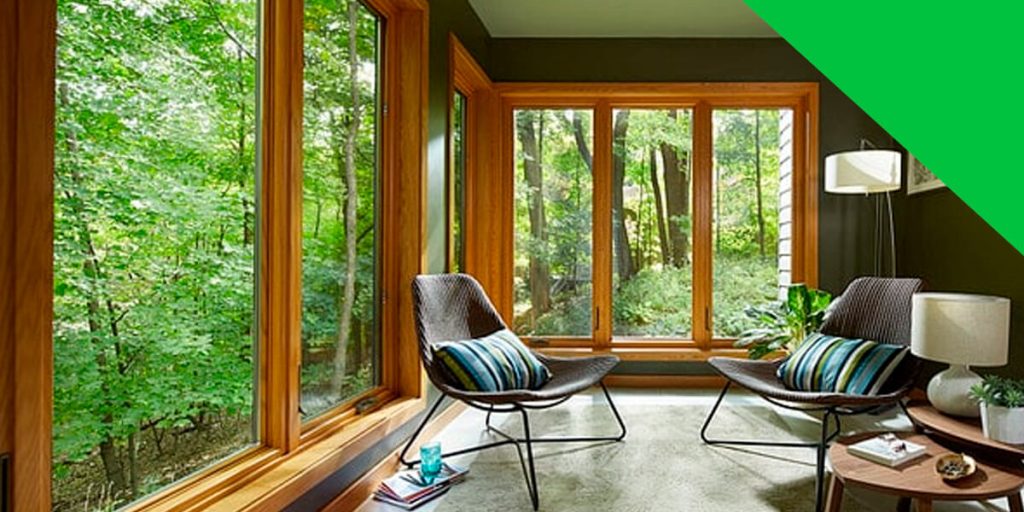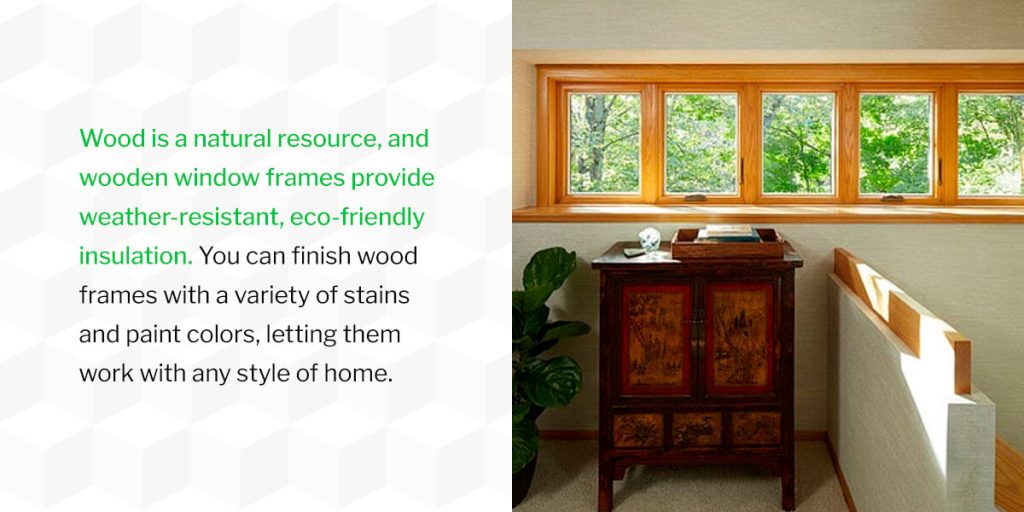MENU


Living in a warm or hot climate has its pros and cons. On the one hand, you tend to get more sunny days and never have to deal with the hassle of snow. On the other hand, higher temperatures mean you need to protect your home and possessions against intense heat. Quality windows help prevent heat from seeping into your home and driving up your energy bill.
Unfortunately, if your home is over a decade old, your windows may not be up to the challenge. Some windows don’t block heat or ultraviolet (UV) rays as well as others do. So, where do you start when trying to find windows that maximize natural light, block excessive heat and last a long time?
In this guide, we’ll review the frames and glass materials that give you the best windows for warm weather.
Let’s start by diving into the best windows for warm climates by frame. Here are the most common window frame materials you may recognize.

Wood is a natural resource, and wooden window frames provide weather-resistant, eco-friendly insulation. You can finish wood frames with a variety of stains and paint colors, letting them work with any style of home. Wood frames tend to be energy efficient because they resist the heat outside.
The wood expands and contracts due to weathering over time. These frames can also be susceptible to moisture, rot, weathering and insect damage, depending on the type of wood. While they require ongoing maintenance like sanding, sealing and painting, they can hold up for years if you maintain them well.
Natural wood offers incredible visual appeal if you don’t mind the added maintenance. However, if you’re looking for a window frame you can install and forget about, you may want to consider an alternative.
Aluminum window frames can be a top choice if you value durability and sturdiness. Like wood frames, they can be long-lasting. However, this recyclable material requires little maintenance — it won’t mold or rot due to the weather. Aluminum frames also let in plenty of natural light and provide a sleeker, more modern look for contemporary home styles.
This low-maintenance framing material won’t warp in the heat and can typically withstand tropical storms. While aluminum is a known heat conductor, newer aluminum window frame models feature a thermal barrier separating the inside and outside of the frame. This barrier limits heat transference and conduction, making these frames ideal for hot climates.
Vinyl window frames use polyvinyl chloride (PVC), a material used for plumbing pipes. These frames are a popular choice for homeowners because they tend to be affordable and energy efficient, with plenty of design options. Vinyl frames are highly versatile and insulate well, which makes them a strong contender for homes in warm environments.
While these frames aren’t quite as strong as wood or aluminum frames, they are fade-resistant and maintenance-free. They also resist moisture, corrosion and insects. You can get vinyl frames to fit any size window and in limitless color options.
As with window frames, there are several types of glass to choose from. To help you find the best option to fit your home’s needs, we’ve collected the two types that make the best windows for hot weather.
Low emissivity (Low-E) glass is designed to block out significant amounts of UV rays and infrared (IR) light from the sun. These harmful rays can cause skin damage and fade items inside your home, including furniture and clothing. Low-E glass is perfect for homes that get a lot of direct sunlight, as it allows plenty of visible light to pass through while blocking rays that bring heat into your home.
This type of glass uses a microscopically thin metal oxide film that reflects radiant energy to help you maintain your home’s temperature. Low-E windows make your home more energy efficient and prevent you from overworking your AC.
Also known as double-pane or triple-pane windows, multi-pane glass provides additional insulation to help you save energy. These high-performance windows use at least two panes of glass to create sufficient insulation and more comfortable temperatures in homes.
Multi-pane glass uses gases like argon or krypton to insulate the space between the panes. Thanks to multiple layers, these windows are very thick and resist weather-related issues like condensation, mold and mildew.
If you’re ready to replace your windows with something that meets your style, climate and durability needs, consider the following factors when making your decision.
The U-value is a measure of how much insulation a window provides. Also known as the U-factor, it measures how quickly a window transfers non-solar heat from a warm area to a cold one, like from outside your house to inside. The U-rating can range from 0.20 to 1.20. The lower the rating, the better energy efficiency. However, the maximum U-value you’ll want will vary depending on your climate. Look for a U-value of .35 or lower for hot, humid climates and .30 or lower if you live somewhere hot and dry.
Windows with lower U-values, such as double and triple-pane windows, offer better heat resistance and help reduce overall energy costs. In general, homeowners who use glass with the lowest U-rating possible will benefit from maximum heat-flow performance.
The Solar heat gain coefficient (SHGC) window rating refers to how much solar heat and radiation the glass admits and absorbs. This rating is between zero and one. A lower number indicates less solar heat transfer, while numbers closer to one mean more heat transfers through the window.
Windows with a low SHGC rating can significantly reduce cooling bills when temperatures are at their peak, making them particularly efficient for those in hot climates. However, it’s important to note that windows with higher SHGC ratings will also have higher U-value ratings, meaning more heat and less insulation. The SHGC rating you need will depend on your climate and how often you run your AC.
If you love having natural light shine through your home, you’ll need to keep visible transmittance (VT) in mind. This term refers to how much natural light filters through a window on a scale from zero to one. A score of zero means the window is opaque, while a score of one means the window offers maximum natural light. For example, a VT score of .5 means that 50% of the available natural light is coming through your windows, while a .98 means 98% of the light is getting through.
If you live in a hotter climate, you’ll want to aim for a low U-value number, a low SGHC number and a high VT number. This combination will give you plenty of natural light without the heat and harmful rays that come with it.

Older, damaged or low-quality windows can significantly impact your home’s energy efficiency and drive up your cooling costs. Windows with drafts and leaks also lead to poor indoor comfort. Fortunately, Renewal by Anderson has plenty of replacement window options to meet your needs and suit your design preferences.
We design our quality windows with Fibrex® material, a revolutionary composite we can use for many popular styles. This innovative material combines the low-maintenance features of vinyl and the strength and stability of wood frames, making it an ideal choice for any homeowner.
If you need to replace your windows, we have everything you need to boost energy efficiency without compromising beauty and performance. Learn more about our replacement window options today by calling us at 404-491-0124 or filling out our online form.